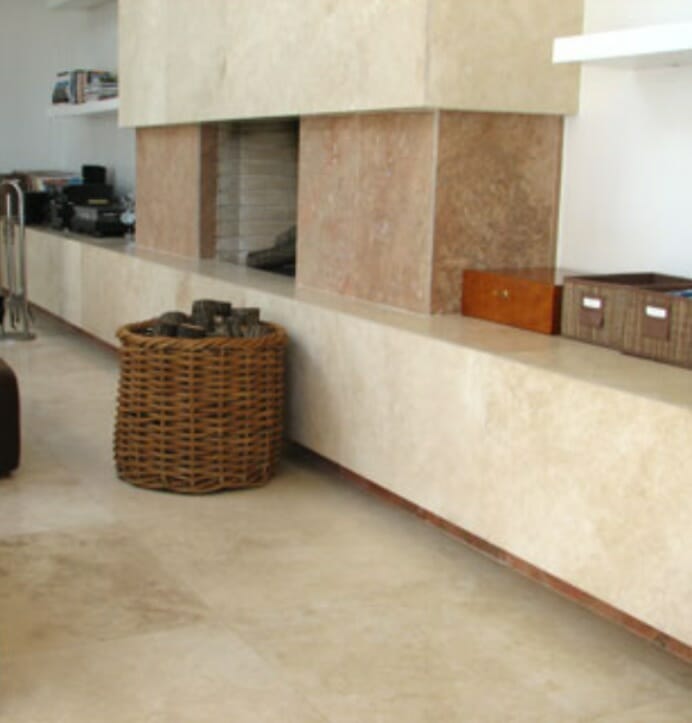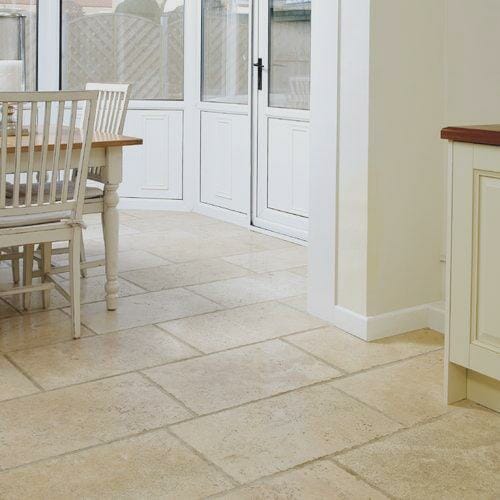HOW TO SERIES – Sealing Travertine Floor Tiles

Sealing travertine has been debated among us in the stone and tile industry for many years.
The reason for the discussion has to do with the porosity of the travertine stone.
Travertine is very dense and polished travertine may not be as porous as honed travertine.
With that being said, what if a staining agent was to absorb into your travertine tile.
Now you would have a problem, and not just any problem, but possibly an expensive problem.
Our recommendation would be sealing travertine when it’s first installed and depending what sealer you use, sealing regularly every year or every other year.
One thing about travertine you should be aware of. Travertine is a calcium based stone like marble and is susceptible to etching by any acidic liquid.
Sealing travertine will not protect it from etching, so caution should be used with any acidic liquid (orange juice).
How to Seal Travertine
Sealing travertine is not very complicated and if you take your time and clean it properly before you seal it, you shouldn’t have any problems.
- First, you need to know if there are any topical coatings such as wax or polyurethanes on the travertine, and if there is, it requires a stripping process, that’s different than what it is described below.
- Clean your travertine thoroughly with a neutral cleaner or if it’s badly soiled, you can use an akaline stone cleaner to break down dirt and grease build-up.
- Once the travertine surface is clean, dry it with a cotton or microfiber cloth. It’s very important the travertine is dry before any sealer is applied. In some cases, if the travertine is more porous, it may need 24 to 72 hours to dry before applying a sealer.
- If you’re sure the travertine is completely dry, you can apply the sealer evenly using a lamb’s wool applicator or any soft cloth. Honed or textured travertine will require more sealer due to it being more porous than a polished travertine.
- Not all sealers behave the same and if you’re using a water based sealer, it will take longer to dry compared to a solvent based sealer. It’s important not to let the sealer puddle up as any unwanted residue can dry up and even stain some stones.
- After applying a second coat of sealer, dry buff with either a microfiber or cotton cloth, making sure to remove all excess sealer. You don’t want to see any streaks left by the sealer
- If you do see streaks left by the sealer, re-activate the sealer with some more sealer, and then buff off.
How to Maintain your Travertine Floor

Maintaining travertine can be easy, as long as you know what cleaners are best and how to use them.
When cleaning travertine we recommend using a neutral floor cleaner. Neutral meaning neautral pH or pH of 7 on the pH scale.
For daily cleaning, use a microfiber mop, with warm water and your neutral cleaner. Mop your floor and dry with dry mop.
When it comes to cleaning and sealing travertine or cleaning ceramic tile and grout, we strive to help educate our customers on the best protection they can have, helping them save time and money in costly restoration costs down the road.

